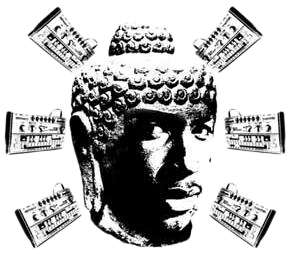Hyperactive Ambient
April 28, 2019

Close your eyes and listen to the sounds around you. What do you hear? Maybe you are on the street and hear the traffic. Perhaps you are in the forest and you hear birds chirping. It could be that you hear the hum of your fridge. The sounds we hear around us - the ‘background noise’ - are part of the ambience of a location. A simple definition of ambient music would therefore be ‘background music’. And while this is partially true, ambient is so much more. Ambient music comes in many shapes and sizes, that all have one thing in common: they invoke a certain state of mind. Ambient can make you happy or sad. It can make you feel relaxed or agitated. It might make you relive a memory or have a vision of the future. This state of mind (or emotion/feeling, if you will) is achieved in a different way than most other types of music. Ambient usually does not rely on lyrics or melodic riffs, but instead uses slowly evolving soundscapes and diffuse harmonics to achieve the desired effect.
As with most genres of music, there are many different types of ambient music with their own specific characteristics. The focus often lies on the texture of the sound, which can be made using synthesizers, acoustic instruments or sampling nature or urban sounds. Delay and reverb effects are often generously used (watch out though: less is more) to give an atmospheric quality to the sound. Cascading pads or chanting vocals are also common. Ambient usually doesn’t have strong rhythmic components such as drums or sharp percussion, but many exceptions exist. Crossovers with techno, house and jungle are numerous, with notable early contributions being Aphex Twin’s Selected Ambient Works 85-92 and Biosphere’s Microgravity.
The term ambient was coined in the late ‘70s by Brian Eno on his E.P. Music for airports. According to him, “Ambient Music is intended to induce calm and a space to think. Ambient Music must be able to accommodate many levels of listening attention without enforcing one in particular; it must be as ignorable as it is interesting.”. However, while he was the first to name the genre, he wasn’t the first to make it. In the early 20th century, Debussy and Satie were already exploring musical structure (or lack thereof), a style now called avant-garde. In the ‘60s, CDs with ‘relaxation music’ could be found everywhere. In the early ‘90s, artists such as Aphex Twin, Biosphere and The Orb introduced a more mainstream ambient sound that was more active and focused. Nowadays, ambient music comes in so many different varieties that it is hard to keep track. Dark ambient, space ambient, dub ambient... the list is endless. Of course, this means that there is always something to fit your specific mood!